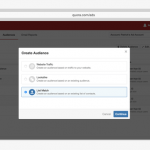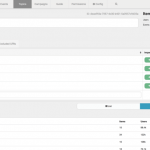Scott Brinker: How the martech landscape fits together
In this “post-platform era,” he says, organizations need to catch up.

When you look at Scott Brinker’s famous — and increasingly crowded — Marketing Technology Landscape, it resembles a wall of tiny bricks.
But when you talk to Brinker about how marketing tools are actually used these days, it’s not a wall that comes to mind. It’s more like a group of islands connected by an ocean of data and a fast-moving ferry.
Brinker — the co-founder and CTO of content marketing platform Ion Interactive and the program chair of our MarTech Conference — recalled for me recently that major marketing clouds used to give the impression that they provided “one platform to rule them all.”
But, he said, “like politicians’ promises,” the rhetoric didn’t match the reality. It was never really a one-platform world, Brinker said, and now it’s abundantly clear we’ve entered what he has described as a “post-platform era.”
In this topology, businesses employ multiple tools. Some are “like tent poles,” he said, serving as basic structural components — such as Adobe’s Marketing Cloud or Marketo — while there’s a data and functional integration fabric that connects them all.
One tool might perform a central role, acting as a kind of conductor, but which tool that is depends on who the user, need or department is. For a social media manager, for instance, it might be Sprinklr. For an email manager, it could be MailChimp.
Additionally, small and medium-sized businesses generally have different configurations than large enterprises. But the basic trend is the same: an orchestra of tools, connected through data and functionality.
But an orchestra needs a conductor so that all the players follow the same score and the same beat.
CDPs, JOEs, iPaaS
This can take many forms to synchronize data and functions. A customer data platform (CDP), for instance, can serve as the central repository of all customer-related data, so that there is one view of the customer.
But Brinker makes the point that even CDPs leave a lot of room for distributed use of data and do not necessarily provide a complete centralization of all customer info.
For instance, he said, if a customer tweets dissatisfaction with the company’s product, the main info about the customer’s unhappiness — picked up by a social listening tool — will be communicated back to the CDP. The platform or the administrator will get a red flag, so the rah-rah email about the newest variation of the product is not yet sent to the complaining customer.
But the secondary data in the tweet — how much the tweet is shared, for instance — might be retained in the social tool.
This means that, even with a central CDP, the marketing configuration is more like a distributed confederation than a republic with a strong central government.
Besides CDPs, there have been many other efforts to turn the disparate components into a single orchestra capable of playing a single tune for the customer across all channels.
Journey orchestration engines (JOEs), customer experience orchestration services, decisioning-as-a-service, integration-platform-as-a-service (iPaaS) and workflow automators are among the solutions intended to let many tools work together efficiently with shared data, not to mention major marketing clouds that have integrations or API-based connections to an ecosystem of compatible tools.
Whatever the method or concept, Brinker noted, the central idea of virtual platforms is that a variety of tools — some of which have a more central role to a given user than others — “allow you to run a business as if you had one platform.”
But that means that the business itself needs to be structured so that it can be as flexible, data-connected and customer-oriented as the set of tools used to communicate with customers.
Who owns it?
That’s a challenge, which is why Brinker and our other MarTech Conference organizers have decided to initiate a Stackies competition of organizational stacks for October’s event in Boston. It will alternate with our regular MarTech Stackies competition, which will now take place in our spring conferences.
“If you think about how marketing teams are [generally] organized,” Brinker told me, “they’re very hierarchical, split by their channels,” like web or social or customer service.
But a virtual toolset is designed to work across channels, so that the customer has the same experience throughout. Customer service, marketing and sales could all be using the social management tool.
With a virtual and largely cloud-based network that can function anywhere, who owns the social tool? The tech stack is likely a kind of federation with a governing layer, but who governs that layer?
Brinker noted that it’s not yet clear what organizational models work best, although he pointed to Dun & Bradstreet’s flexible Tiger Teams, where mix-and-match groups of specialists assemble for specific product launches or marketing campaigns. It’s not even clear any more, he said, where the boundaries are between marketing, product and sales departments.
Perhaps the tectonic plates are still moving so much we can’t see the final topology.
In a few years, for instance, we may find that blockchains’ smart contracts, artificial intelligence-enhanced platforms and other self-implementing technologies have had a more profound influence than we now think is possible, on where the configurations of tools and organizations eventually end up.
Until we reach that point, it may be that any map of the tool or organizational configuration is only a placeholder.
Marketing Land – Internet Marketing News, Strategies & Tips
(60)













